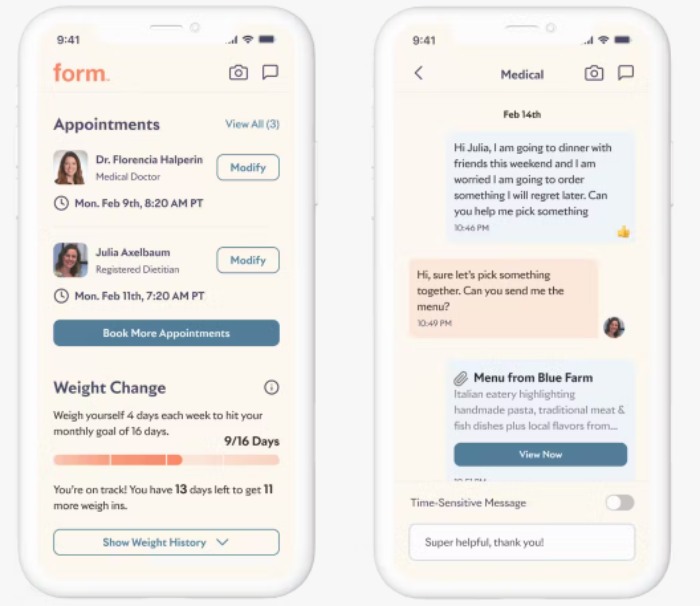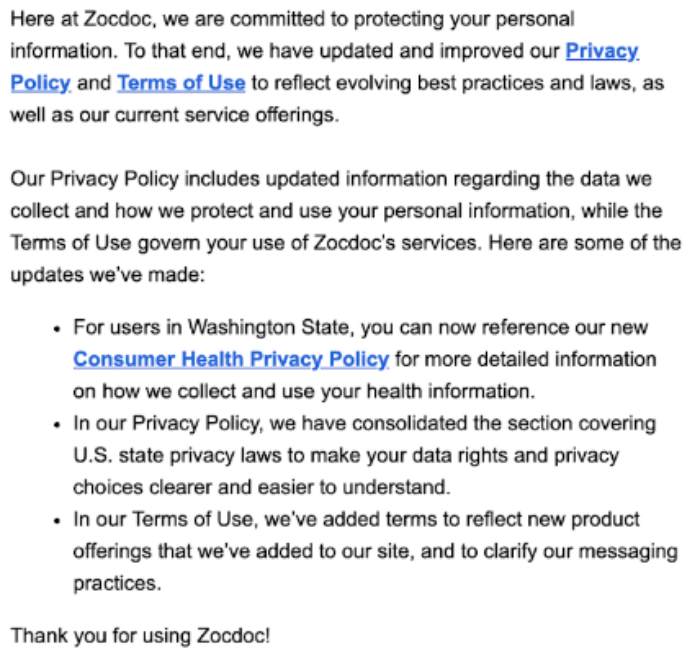60% of consumers want to receive promotional content via email. This is promising news for businesses looking to engage in email marketing, including those in the healthcare industry.
But in a regulation-heavy industry like healthcare, organizations must take email security very seriously. In March 2022, there were 30 reported healthcare breaches. And they impacted 1.4 million people.
Healthcare emails often contain protected health information (PHI). If this information gets into the wrong hands, it could spell trouble for your organization.
This could include legal penalties, reputational damage, and loss of patient trust.
Let’s dive into HIPAA-compliant emails and how to make sure you’re not in violation of these regulations when communicating with patients.
What Is a HIPAA-Compliant Email?
HIPAA doesn’t really have a specific set of rules governing email. However, it does require healthcare providers and organizations to encrypt all electronic communication of PHI.
Emails that adhere to HIPAA regulations have a few things in common:
- They have data loss prevention (DLP) measures in place to prevent unauthorized disclosures of PHI (e.g., scanning outgoing emails for sensitive information, and enforcing policies to ensure unauthorized sharing).
- They have audit trails, which include records of who sent, received, accessed, or modified the information.
- They implement access controls, such as password protection, multi-factor authentication (MFA), and user permissions.
- They’re encrypted to prevent unauthorized access.
The ultimate goal of HIPAA is to protect patients and their sensitive healthcare information. So, health care providers are responsible for keeping this information safe.
Nowadays, they use emails for many purposes, such as:
- Patient satisfaction surveys and feedback requests
- Follow-up care and post-discharge instructions
- Clinical communication and collaboration
- Healthcare marketing and promotions
- Medication reminders and refills
- Billing and financial information
- Disease prevention campaigns
- Test results and lab reports
- Appointment reminders
- Telehealth visits
- Newsletters
- Updates
With so many emails going out, healthcare professionals must be extra careful when following HIPAA rules about email security.
We Level Up Treatment Centers is a good example. While using emails for various purposes, the organization makes sure it adheres to HIPAA rules.
The screenshot below shows the fine print under an email We Level Up Treatment Centers sent out. The disclosure highlights that We Level Up follows the HIPAA and HITECH Act to ensure patient information is safe while they receive the services they need.
Consider another example. Travel nursing is a job that involves a unique set of circumstances. For instance, travel nurses often have to access patient information on the go. This means that a big part of their job requires them to communicate with patients and other healthcare providers via email.
As they move toward new, unknown facilities, the risk increases. That’s why it’s important to implement HIPAA-compliant email systems, as well as encrypted messaging platforms.
Safeguarding patient privacy is also important when prescribing medications, oral semaglutide for weight management or other diabetes treatments.
Health care providers must exercise caution when emailing details about this type of patient’s prescription or treatment plan. To maintain HIPAA compliance, electronic communications containing protected health information (like the provision of health care) should always be encrypted and transmitted through a secure messaging platform.
Failure to secure emails discussing a patient’s medication regimen, dosage of oral semaglutide, or potential side effects could result in a breach of confidentiality and significant fines under HIPAA regulations.
Robust email security protocols and staff training on handling PHI are essential for healthcare organizations to protect patient privacy while facilitating coordinated care.
How to Send Healthcare Emails That Meet HIPAA Regulations
Follow these tried-and-true tips to help you secure every email you send.
Encrypt Everything
As we mentioned above, encryption is key to ensuring HIPAA-compliant emails. How does encryption work? It masks sensitive data so that only the user containing a decryption key can access it.
This is where end-to-end (E2EE) encryption comes into play, which encrypts emails at rest and in transit. This means that whether an email is in your inbox or it’s an email you sent, they’re equally secure no matter what.
So, how do you encrypt your healthcare emails? Choose an email service provider that offers built-in encryption features or supports email protocols like Transport Layer Security or Secure/Multipurpose Internet Mail Extensions (S/MIME).
Also, consider password-protecting sensitive email attachments or use a secure file-sharing service to share large files containing PHI.
Send these password-protected attachments separately from the email body. And only share passwords through a separate channel, such as phone call, text message, secure messaging app, or in person.
Let’s look at an example of how a healthcare organization can use encryption in its emails to keep PHI safe.
Form Health sends its patients emails about their online prescriptions for medications like Mounjaro for weight loss.
The telehealth platform can protect this sensitive information using secure platforms, such as a mobile app. The brand specially designed the Form Health app to encrypt communication between patients and dieticians, often without the need for email.
Form a Business Associate Agreement (BAA) With Your Email Provider
Anytime you use a third-party application or platform—such as an email service provider (ESP)—that will be handling ePHI, be sure to prepare a business associate agreement (BAA).
This will ensure they follow HIPAA regulations, too. That way, you can safeguard patient data at all touchpoints.
If an ESP doesn’t want to enter into this agreement with you, keep looking. A BAA should always be a dealbreaker when searching for an ESP that handles ePHI.
Implement Access & Audit Controls
Limit access to PHI within your email to authorized individuals only. Use secure authentication methods, such as strong passwords or MFA.
Require patients to create strong, unique passwords to protect their email accounts from unauthorized access.
This involves using password complexity requirements, such as minimum length, special characters, and numbers.
Implement audit control procedures to monitor and record access to sensitive ePHI. This involves tracking and logging access to email systems that handle ePHI. Monitor user logins, email send and receive activities, or any changes or access to email content containing PHI.
With audit controls, you can record detailed information about email activity, including the date, time, sender, recipient, subject, and content of healthcare emails. These audit logs allow you to track the flow of PHI and identify any unauthorized or suspicious activity.
Develop Email Policies Within Your Organization & Train Staff
Put a policy in place that outlines how stakeholders within your healthcare organization should handle emails containing PHI.
Your policy should specify the responsibilities of employees, contractors, and partners regarding how they should handle PHI.
Include requirements for safeguarding PHI, including encryption, access controls, and data breach reporting.
Don’t forget to add procedures for HIPAA training, risk analysis, incident response, and auditing. Establish protocols for how your organization should respond to incidents, breaches, and potential violations of HIPAA regulations.
Last but not least, consult with legal counsel to make sure your email policy adheres to HIPAA regulations.
Archive Your Emails According to Standards
To maintain HIPAA compliance, you must archive and retain all emails containing protected health information for a minimum of six years.
After this period, you should dispose of the information. You can automate this process with an email archiving solution.
Inform Patients About the Risks of ePHI Communication
Regularly update your privacy policy so that patients know about the type of data you collect and how you protect and use their information.
Zocdoc regularly updates its privacy policy and Terms of Use.
Screenshot provided by the author
Always get consent from patients before communicating with them via email. In most states, consent isn’t necessary.
But it’s still a good idea to ask for consent to make sure patients understand the risks of communicating PHI by email. These risks include unauthorized access, interception, and data breaches.
Knowing the risks involved, patients can make informed decisions regarding how they want to communicate about their PHI electronically.
Put Data Backup & Disaster Recovery Measures in Place
Have a disaster recovery plan in place so that if a cyberattack, system outage, or natural disaster occurs, you can quickly recover PHI.
A good HIPAA-encrypted email solution should include a data backup and disaster recovery plan.
Use an Email Security Solution
Invest in an email security solution that can stop malicious emails before they harm your healthcare organization.
An email security solution offers an additional layer of protection. It works by delivering threat prevention across emails that handle sensitive PHI.
Look for email security software that offers:
- Outbound Simple Mail Transfer Protocol (SMTP)
- Hosted phishing and ransomware protection
- Email backup MX (mail exchange)
- Phishing protection
- Email forwarding
Maintaining HIPAA Compliance in Patient Communication
The national standards for keeping PHI safe in healthcare emails involve encryption, access and audit controls, and strong data loss prevention (DLP) strategies.
Once you take care of these tasks, you’ve made a great first step to making sure your emails follow HIPAA regulations and protect your patients medical records.
The next step? Using an email security solution that protects email communications between your organization, providers, and patients.
You can also take things a step further with secure email hosting services. That way, you’ll have access to strong email security measures and a HIPAA-compliant email service provider.
By following these steps and implementing robust email security measures, healthcare organizations can ensure the security policy and privacy of their communications, complying with the Privacy Rule and protecting identifiable health information and electronic health records.
Ensuring that healthcare clearinghouses and covered entities take reasonable steps to safeguard patient records is essential to avoid criminal penalties and protect against unauthorized disclosures of PHI for personal gain or commercial advantage.
What technical safeguards will you implement as a health care professional to provide the best medical care and protect your health care operations?
Jeremy is co-founder & CEO at uSERP, a digital PR and SEO agency working with brands like Monday, ActiveCampaign, Hotjar, and more. He also buys and builds SaaS companies like Wordable.io and writes for publications like Entrepreneur and Search Engine Journal.



